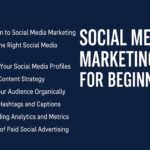Table of Contents
ToggleUnderstanding the Lead Funnel Concept
A lead funnel, fundamentally, is a marketing model that outlines the journey a prospective customer undertakes, from being aware of a product or service to ultimately deciding to make a purchase. This concept is crucial in the realm of marketing, as it helps businesses understand and optimize the customer journey. The lead funnel is typically divided into several stages: awareness, interest, decision, and action, encapsulating the various phases that a potential customer goes through before converting into a paying client.
At the top of the funnel, awareness is where potential customers first encounter a brand. This stage is typically driven by content marketing, social media engagement, and search engine optimization strategies that help generate traffic to a business’s website. It’s vital because it establishes the first point of contact, making it critical to capture customer interest effectively.
As consumers progress to the interest stage, they begin to seek more information, indicating a desire to learn about the offerings in greater detail. This can include reading blog posts, watching videos, or downloading guides. Businesses must provide engaging content that addresses the prospects’ pain points, building on their interest and nudging them toward the decision stage.
The decision stage is where prospective customers evaluate their options before making a purchase. Detailed product comparisons, testimonials, and case studies play an important role in this stage to help influence their decision. Finally, the action stage occurs when a lead transforms into a customer by completing a transaction, marking the success of the lead funnel.
In today’s competitive marketplace, understanding and optimizing a high-converting lead funnel is essential. It allows businesses to maximize their lead generation efforts, refining their marketing strategies while enhancing customer engagement at each stage.
The Stages of a High-Converting Funnel
Creating a lead funnel that effectively converts potential customers into actual buyers is essential for any successful marketing strategy. The AIDA model—Awareness, Interest, Decision, and Action—serves as a foundational framework for understanding how prospects transition through a high-converting funnel. Each stage plays a pivotal role in guiding the customer toward making a purchase.
The first stage, Awareness, is where potential leads first come across your product or service. This stage is crucial for building brand visibility and attracting the attention of your target audience. Marketers should utilize various channels, such as social media, search engines, and content marketing, to create engaging content that showcases the value of their offerings. At this point, the focus should be on ensuring that leads recognize the existence of your brand while providing relevant information that addresses their pain points.
Following Awareness is the Interest stage, where potential customers express a desire to learn more about what you offer. Here, marketers should provide in-depth content that connects with the audience’s needs and preferences. This could include blog posts, webinars, or email newsletters that offer valuable insights or solutions. Engaging potential leads during this stage is essential since it sets the foundation for the next step in the funnel.
The Decision stage is where prospects evaluate their options and consider whether to proceed with your offering. Marketers must provide clear comparisons, customer testimonials, and case studies that outline the benefits and features of the product or service. A well-crafted call to action is also vital at this stage to facilitate decision-making.
Finally, the Action stage represents the culmination of the buyer’s journey, where potential leads convert into paying customers. This is where marketers should simplify the purchasing process, providing secure payment options and clear instructions to reduce friction. By meticulously managing these stages, marketers can establish a high-converting funnel that effectively drives sales and fosters long-term customer relationships.
Tools to Build Your Lead Funnel
Creating an effective lead funnel requires leveraging various tools and platforms that streamline the process of attracting, nurturing, and converting leads into customers. One crucial category of tools is Customer Relationship Management (CRM) systems. CRMs, such as HubSpot or Salesforce, allow businesses to manage interactions with potential leads by organizing contact information, tracking communication history, and analyzing engagement patterns. This data is invaluable for personalizing outreach efforts and ensuring timely follow-ups, significantly enhancing the lead funnel’s conversion rates.
In addition to CRMs, landing page builders play a vital role in the lead generation process. Tools like Unbounce and Leadpages enable marketers to design visually appealing and high-converting landing pages without the need for extensive coding knowledge. These platforms often offer custom templates, A/B testing capabilities, and integration options with various marketing software, making them essential for capturing visitor information and facilitating the initial steps of the lead funnel.
Email marketing tools are also fundamental for nurturing leads throughout the funnel. Software solutions such as Mailchimp and ConvertKit provide functionalities for automating email campaigns, segmenting audiences, and monitoring engagement metrics. By sending targeted content and relevant offers, businesses can guide leads through the funnel, increasing the likelihood of conversion. Moreover, these tools enable marketers to analyze the performance of their campaigns, allowing for data-driven adjustments to enhance effectiveness.
Finally, analytics platforms, including Google Analytics and Hotjar, offer insights into user behavior on websites and landing pages. These tools track metrics such as traffic sources, conversion rates, and user interactions, enabling marketers to identify strengths and weaknesses within their lead funnel. By understanding which stages require improvement, businesses can optimize their strategies and enhance the overall success of their lead generation efforts. Integrating these tools effectively creates a cohesive system that maximizes lead funnel performance.
Crafting Compelling Copy
Persuasive copywriting is integral to the effectiveness of every lead funnel stage. By capturing the interest of potential customers, compelling copy encourages engagement and drives conversions. When crafting copy for your funnel, consider the following essential elements to enhance its effectiveness.
First, focus on writing engaging headlines that not only draw attention but also clarify the value proposition. A well-structured headline serves as a hook, enticing visitors to explore further. Use active voice and strong adjectives to create an instantaneous impact. Additionally, ensure that your headlines are tailored to your target audience’s needs, reflecting their pain points and aspirations.
Next, compelling descriptions serve as the backbone of your funnel’s messaging. These descriptions should provide comprehensive information about the product or service you are promoting, highlighting its key features and benefits. Employ a conversational tone to foster a connection with your audience, making the information feel relatable and accessible. Emphasizing the unique selling points of your offering can help it stand out amid a crowded marketplace.
Calls-to-action (CTAs) are another critical component of persuasive copy. Effective CTAs should be clear and actionable, guiding users on the next steps they need to take. Utilize phrases that invoke urgency, such as “Sign up today” or “Get your free trial now,” and avoid using overly generic language that may dilute the call’s impact. By integrating a sense of immediacy and value, CTAs can significantly enhance conversion rates.
Avoid common mistakes such as excessive jargon, which may alienate your audience, and unclear messaging that leaves potential customers confused about the desired action. By adhering to these principles of persuasive writing, you can significantly increase the likelihood of conversion at each stage of your lead funnel.
Identifying Your Target Audience
Understanding your target audience is a fundamental element in creating a successful lead funnel. To effectively guide potential customers through the stages of your funnel, it is imperative to begin with comprehensive research on who your ideal customers are. This process involves creating detailed buyer personas, which represent different segments of your target market. A buyer persona is a semi-fictional character based on real data that embodies the characteristics, behaviors, and motivations of your ideal customers.
Start by analyzing demographic data such as age, gender, income level, educational background, and geographic location. These details are invaluable for segmenting your audience and tailoring specific marketing messages that resonate with each group. However, demographic factors alone may not provide the full picture. Therefore, it is essential to delve deeper into psychographics—understanding the attitudes, values, interests, and lifestyles of your audience. This information helps to uncover the emotional triggers and pain points that drive purchasing decisions.
Utilizing surveys, interviews, and social media analytics can be effective methods for gathering this data. Additionally, researching competitors and examining their customer base can provide insights into potential gaps in the market or unmet needs that your product or service can address. By synthesizing both demographic and psychographic data, you can create a robust profile of your ideal customer. This detailed understanding will not only shape your lead funnel strategies but also inform your messaging, ensuring that it resonates with the right audience at the right time.
Throughout this process, continuously refining your understanding of your target audience is crucial, as markets and consumer preferences may evolve. This ongoing research will allow you to adjust your funnel strategies to maintain alignment with your audience’s needs and behaviors, ultimately enhancing your conversion rates.
Driving Traffic to Your Funnel
Creating a successful lead funnel requires effective traffic generation strategies to attract potential customers at each stage. The primary methods for driving traffic can be categorized into organic and paid strategies.
Organic methods play a crucial role in establishing authority and enhancing visibility over time. Search Engine Optimization (SEO) should be a top priority, as it is essential for improving your website’s ranking in search engine results. By optimizing your content with relevant keywords, meta tags, and quality backlinks, you increase your chances of attracting targeted traffic to your lead funnel. Additionally, content marketing, which encompasses blogs, articles, and videos, helps to engage audiences while providing valuable information. This not only drives traffic but also builds trust and credibility with potential leads.
On the other hand, paid advertising strategies can deliver immediate results, making them a powerful complement to organic methods. Pay-Per-Click (PPC) advertising, particularly through platforms like Google Ads and Bing Ads, allows you to target specific keywords and demographics, ensuring that your ads are shown to the right audience. Social media advertising is another effective approach. Platforms such as Facebook, Instagram, and LinkedIn offer advanced targeting options, enabling you to reach users based on their interests, behaviors, and demographics. Crafting compelling ad copy and visuals is critical for capturing attention and driving clicks.
When considering audience targeting, it is essential to analyze your existing customer base and identify common characteristics. Tools such as social media insights, Google Analytics, and customer surveys can provide valuable data about your target audience. Tailoring your messaging to resonate with this audience increases the likelihood of conversion, as it speaks directly to their needs and pain points. By strategically utilizing both organic and paid traffic generation methods, you create a roadmap that leads potential customers through your funnel effectively.
Nurturing Leads Through Email Marketing
Nurturing leads effectively is crucial once they enter your sales funnel, as it plays a vital role in converting prospects into customers. Email marketing serves as one of the most direct and personal communication channels, allowing businesses to engage and maintain relationships with their leads throughout the buying journey. An effective email marketing strategy involves segmentation, personalization, and automation—all essential components that enhance engagement and improve conversion rates.
Segmentation is fundamental to the success of any email marketing campaign. By dividing your audience into distinct groups based on demographics, behavior, or preferences, you can send targeted content that resonates with each segment. This tailored approach not only increases open and click-through rates but also fosters a sense of relevance among your audience. For instance, leads who have shown interest in specific products can receive emails highlighting features and benefits relevant to them, which enhances their overall experience and increases the likelihood of conversion.
Personalization goes hand-in-hand with segmentation and involves crafting individualized messages that speak directly to the recipient. Utilizing the lead’s name, previous interactions, or expressed interests in your emails creates a sense of connection, making them more likely to engage with the content. Furthermore, incorporating relevant product recommendations based on past behaviors can drive conversions effectively.
Automation is another critical aspect of email marketing for nurturing leads. Automated campaigns enable businesses to send timely follow-ups, welcome series, or re-engagement emails without manual intervention, ensuring that valuable content reaches leads at the right moment. This not only saves time but also ensures that leads remain engaged at various stages of the funnel. Regularly following up keeps your brand top-of-mind and encourages leads to move closer to the point of purchase.
In conclusion, harnessing the power of email marketing strategies that focus on segmentation, personalization, and automation is essential for nurturing leads through the funnel. By implementing these techniques, businesses can significantly improve their conversion rates and foster long-lasting relationships with customers.
Analyzing Funnel Performance
In the realm of digital marketing, analyzing funnel performance is an essential practice for any business aiming to convert leads into customers. This process involves closely monitoring key metrics that reveal the efficacy of each stage within the lead funnel. By understanding these data points, marketers can identify areas of improvement and assess the overall health of their customer acquisition strategies.
Among the crucial metrics to track are conversion rates, bounce rates, and customer acquisition costs. Conversion rates indicate the percentage of visitors who complete a desired action, such as signing up for a newsletter or making a purchase. High conversion rates suggest that the lead funnel is effectively guiding potential customers toward making informed decisions. On the other hand, bounce rates represent the percentage of visitors who leave the site after viewing just one page. A high bounce rate may signal that the landing page content is not relevant or engaging enough, warranting a review and potential revision.
Customer acquisition costs (CAC) provide insight into the resources spent on acquiring new customers. By calculating CAC, businesses can determine the return on investment for their marketing efforts. A high CAC might indicate inefficiencies in the lead funnel, prompting marketers to streamline processes or adjust their targeting strategies to enhance performance.
Utilizing analytics tools such as Google Analytics or HubSpot can significantly aid in the continuous optimization of the lead funnel. These platforms provide real-time data, allowing marketers to monitor user behaviors, adjust strategies, and optimize content accordingly. Regularly reviewing this data enables organizations to make data-driven decisions and implement necessary changes that can ultimately lead to higher conversion rates and a more effective lead funnel.
Iterating and Improving the Funnel
Creating a lead funnel that converts requires not only an initial strategic design but also ongoing optimization and refinement. As market dynamics and consumer preferences evolve, it is crucial to continually assess and enhance your lead funnel to maintain its effectiveness. One of the most effective methods for achieving this is through the collection of feedback. By soliciting insights from both potential and existing customers, businesses can gain valuable perspectives on the user experience and identify areas that require improvement.
Moreover, conducting A/B testing can significantly enhance the performance of your lead funnel. This method involves comparing two versions of a webpage, email, or any other marketing asset to determine which one performs better regarding user engagement and conversions. By systematically testing different elements, such as call-to-action buttons, headlines, or content layouts, marketers can make informed decisions based on data rather than assumptions. Over time, these incremental changes can lead to a significant increase in overall conversion rates.
Additionally, it is essential to monitor performance metrics regularly. Key performance indicators (KPIs) such as click-through rates, drop-off points, and overall conversion rates provide essential insights into how well the funnel is functioning. Utilizing analytics tools can help visualize these metrics and highlight trends that may inform strategic adjustments. By analyzing data over different periods, marketers can understand better which stages of the funnel require focus and innovation.
Continuous improvement is integral to a successful lead funnel. By adopting a mindset geared toward iteration and leveraging feedback, A/B testing, and performance metrics, businesses can adapt their strategies and enhance their lead-generation efforts over time. This ongoing process not only increases conversion rates but also strengthens customer relationships, ultimately driving long-term success.




